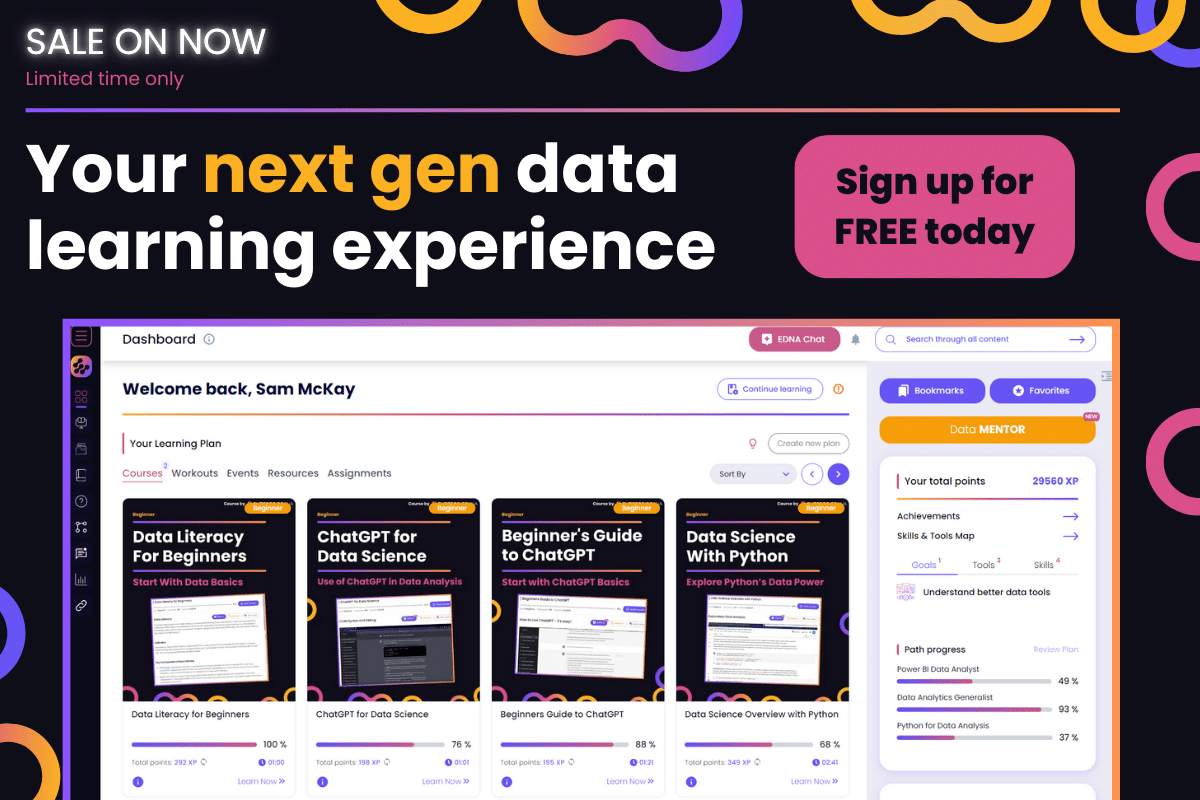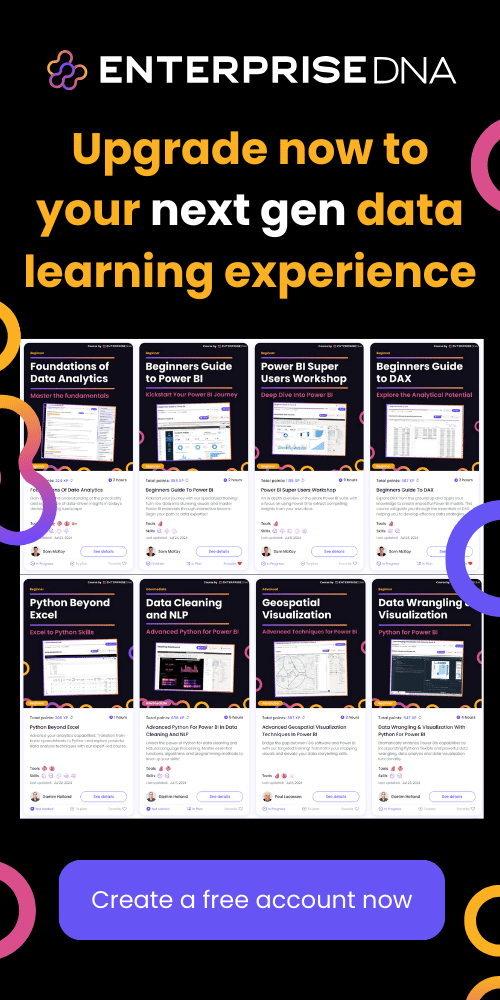Showing trends and how they change over time can add a lot of value to your consumers and decision makers. In this example I show you how you can use the conditional formatting inside Power BI tables to showcase this type of insight really well.
Obviously to show growth trends we actually need to calculate growth rates. This is also a great use of the DAX formula language. I show you how you can use a combination of formulas including time intelligence calculations to first of all come up with the correct results.
There’s a little bit to the DAX side of it, so if you’re just starting out with formulas inside of Power BI check out Mastering DAX Calculations at Enterprise DNA Online. This course covers all the ‘need to knows’ around DAX.
Utilising DAX effectively though is extremely important in Power BI. Any quality analytical insight inside of Power BI can only really be found by implementing DAX well and in combination with a data model which is built correctly, with the right relationships etc.
The table visualizations inside of Power BI are fantastic. They are so much more than just a static table of information. First off, they are dynamic, so they’ll show your results based on what filters are applied to your reports. They also have some good conditional formatting options (which I show you in the video tutorial), but they also can be used as a filter inside your reports. So many options and opportunities to use these effectively to showcase great insights.
I always like to use tables to show granular levels of detail. You might have your bar or column charts aggregate information up but then you may also want to view every single sale or transaction and see the details of that. Tables are perfect for this.
This example actually shows the matrix visual, but tables are very similar and all the techniques can be applied across both from a visualisation perspective.
There are plenty of tips and tricks explained in this video. Good luck implementing them all.
Place a comment below if you have any thoughts or feedback.





